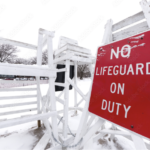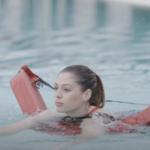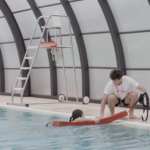Lifeguarding is an essential role in California, where millions of people enjoy its beautiful beaches, pools, and lakes. The safety and well-being of swimmers and beachgoers depend on the skills and knowledge of lifeguards, who undergo extensive training to handle emergencies and prevent accidents.
If you’re interested in becoming a lifeguard in California, this article provides an overview of the training, certification, and recertification process.
Lifeguard Training California: Requirements
To become a lifeguard in California, you must meet certain requirements and complete an approved lifeguard training program. The requirements for being a lifeguard in California are:
Age: Minimum age to enroll in the Lifeguard training is 15 years old, and US Labor Laws require that you be 15 years or older to work at a swimming pool, water park, or lake, and 16 years or older at beaches.
Swimming Skills: You must demonstrate proficiency in swimming by completing a 300-yard continuous swim; Tread water for 2 minutes using only the legs; and complete a timed event within 1 minute 40 seconds by beginning in the water and swimming 20 yards surface diving 7 to 10 feet to retrieve a 10-pound object then returning to the surface and swimming 20 yards on your back to the starting point, exiting the water without using steps or ladders.
First Aid and CPR: Lifeguards must also be trained and certified in First Aid and CPR for Professional Rescuers, as well as AED use.
Lifeguard training in California: Certification
The Lifeguard training program covers topics such as water rescue skills, first aid, CPR, AED use, and lifeguarding operations. You’ll learn how to identify potential hazards, prevent accidents, communicate effectively with patrons and colleagues, and respond to emergencies in a calm and efficient manner.
After completing the Lifeguard training program, you’ll need to pass a certification exam with a grade of 80% or higher. Once you have completed the certification program you should attend an orientation session about facility operations and responsibilities that helps lifeguards understand the facility, their responsibilities, and management’s expectations. The orientation is critical for learning what is unique about your workplace. Ask your employer questions about your facility and become completely familiar with your facility’s operations.
It is the employer’s responsibility to ensure that each Lifeguard candidate has all the skills and knowledge necessary for the position. In addition to checking the candidate’s physical requirements, the employer must ensure that they meet all other requirements as well. You will be evaluated by your employer based on your current skill level. As part of your employer’s training program, you may participate in rescue scenarios to ensure that you are familiar with your facility’s layout and equipment as well as your team’s responsibilities.
Earning a lifeguarding certification means you have completed a training course on a given date. It does not mean that you have learned everything there is to know about lifeguarding. Once hired as a lifeguard, you should expect that you will be required to continue your training.
Lifeguard Recertification in California
Lifeguard certification in California is valid for two years from the date of issuance. To maintain your certification, you’ll need to complete a lifeguard recertification program. Topics covered in the recertification program include water rescue skills, first aid, CPR, and AED use.
The lifeguard recertification program is shorter and less intensive than the initial certification program, but it still requires a significant amount of time and effort to complete. The recertification program typically takes about 10-12 hours and covers updates and changes in lifeguarding standards and practices.
Lifeguard Classes in California
Lifeguard classes in California are offered by a variety of organizations, including public agencies, private companies, and non-profit organizations. The classes vary in length, cost, and location, so you’ll need to do some research to find the one that best fits your needs and preferences.
The most common types of lifeguard classes in California are
The American Lifeguard Association Lifeguard training: This is a comprehensive lifeguard training program that meets national standards and is recognized by employers across the country. The program covers water rescue skills, first aid, CPR, and AED use.
The American Lifeguard Association® has been listed over the years with the CDC Healthy Swimming website. In addition, the U.S. Department of Labor and the U.S. General Service Administration (GSA) has determined that the American Lifeguard Association offers lifeguard certification programs similar to those provided by the American Red Cross.
California State Parks Lifeguard training: This is a training program for lifeguards who work in California State Parks, such as beaches and lakes. The program is conducted by the State Parks Lifeguard Academy and includes rigorous physical and academic training.
Private Lifeguard training: This is a training program offered by private companies that specialize in lifeguard training. The program may be more flexible and customizable than other programs, but it may not be recognized by all employers or agencies.
Lifeguard Classes and Training Programs
There are many organizations that offer lifeguard training classes and programs in California. The American Lifeguard Association (ALA) is one of the most well-known organizations. Additionally, many local recreation departments and community organizations offer lifeguard training programs.
The following national organizations offer lifeguard certification programs similar to that offered by the American Red Cross. This list is not to be considered exhaustive.
- American Lifeguard Association (www.americanlifeguard.com)
- Ellis & Associates (www.jellis.com)
- National Aquatic Safety Company (NASCO) (www.nascoaquatics.com)
- United States Lifesaving Association (www.usla.org)
Benefits of Lifeguard Training
Lifeguard training not only provides you with the knowledge and skills to keep swimmers and beachgoers safe, but it also provides valuable life skills that can be applied in many other areas of life.
Lifeguard training teaches teamwork, communication, problem-solving, and critical thinking, all of which are valuable skills in any job or situation. Additionally, lifeguarding is a great way to stay active and enjoy the outdoors while making a positive impact in your community.
Lifeguard Jobs in California
Once you’ve completed your lifeguard training and obtained your certification, you may be wondering where to find lifeguard jobs in California. Lifeguard positions are available at a variety of locations, including public and private pools, water parks, and beaches.
In California, some of the largest employers of lifeguards include the California State Parks, the city of Los Angeles, and the city of San Diego. Additionally, many private companies and organizations hire lifeguards for special events or summer camps.
Career Opportunities for Lifeguards
Lifeguarding can be a rewarding and exciting career with many opportunities for growth and advancement. Some lifeguards go on to become supervisors or managers, while others may become instructors or trainers themselves.
Additionally, the skills and experience gained through lifeguarding can be applied to other careers, such as emergency services, nursing, or physical therapy. The opportunities for career advancement and personal growth make Lifeguard training in California a valuable investment for anyone interested in pursuing a career in the water safety industry.
Conclusion
Becoming a lifeguard in California requires dedication, training, and certification. The lifeguard training program provides you with the knowledge and skills to prevent accidents, respond to emergencies, and ensure the safety of swimmers and beachgoers.
After completing the program and passing the certification exam, you’ll be ready to start your lifeguarding career. The American Lifeguard Association is a nationally recognized organization that provides comprehensive lifeguard training programs and certifications that meet national standards.
FAQs
How long does it take to Become a Lifeguard in California?
The time it takes to become a lifeguard in California depends on the lifeguard training program you choose and your individual progress. Typically, the lifeguard training program takes about 25-30 hours to complete, including both classroom and in-water training. The certification exam usually takes about 4 hours to complete.
The American Lifeguard Association program is eligible for 29 hours of Continuing Education Unit (CEU) and college elective credits. Upon completing the program, you will be issued a two-year national certification in lifeguarding, CPR/AED, and First Aid.
How does the American Lifeguard Association Training Program Work?
In California, the certification program is accomplished through an instructor-led video training program with online materials and a final online exam that lets you get certified right away as an individual or in a small group. The training can be accomplished on your own and at your own pace. Upon completing the program, you will be issued a two-year national certification in lifeguarding, CPR/AED, and First Aid.
With this blended program, the employers assess your skills and encourage you to continue practicing the skills through in-service training. All the training materials, including the videos, will remain available to you throughout your two years of certification so that you can refresh your skills at any time.
Can I Transfer my Lifeguard Certification from Another State to California?
A: Lifeguard certification requirements vary from state to state, but if you have a current certification from a nationally recognized organization such as the American Lifeguard Association or another organization similar to the American Red Cross, you will be able to transfer your certification to California.







